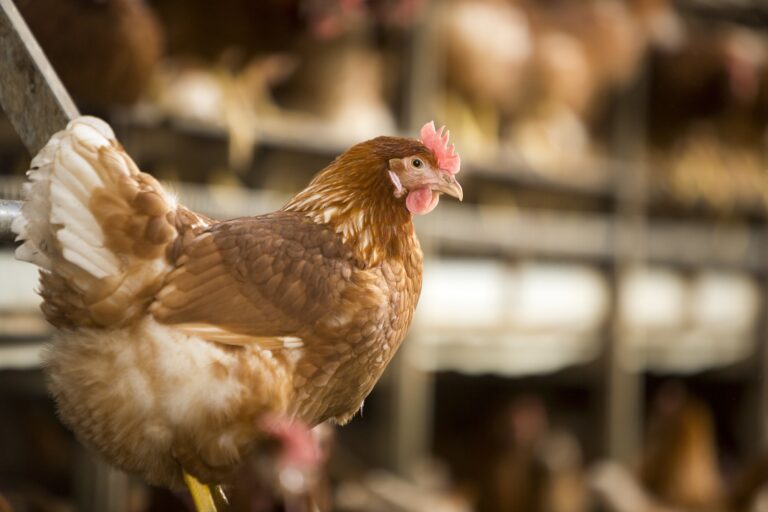This feature was first published in the March 2023 Feed & Nutrition supplement to Poultry Business
Trace minerals play crucial roles in metabolic processes contributing to the growth and production of poultry birds. According to Chloe Paine, poultry technical manager at Trouw Nutrition GB, meeting requirements effectively and precisely can improve health, performance and cost-efficiency while reducing the environmental impact of poultry production.
“Feeding the optimal amount of trace mineral supports good performance,” says Paine. “Trace minerals are required for important functions, such as fertility and immunity, and are therefore essential nutrients to ensure optimal growth and performance.
“Trace minerals including zinc, copper and manganese play crucial roles as part of enzymes involved in the process of eggshell or membrane formation or by direct involvement in the formation of the structural component of the eggshell.
“Providing the correct amount of trace mineral in a bioavailable form will help enhance growth performance and breast yield in broilers, and reduce the proportion of cracked eggs in layers.”
Meaningful improvements can be gained in the overall health and performance of a poultry flock while also reducing the environmental impact of production if innovative approaches to feeding minerals are adopted. There are different strategies that can be utilised including precision feeding and optimising mineral technology.
Paine says that key to cost-effective mineral nutrition is meeting requirements precisely, by providing only what is necessary for the life stage and production status of the bird, following a responsible minerals approach. By so doing you avoid under-supplementation that can reduce performance, and over-supplementation which will push up costs and increase the environmental impact through greater waste.
“Precision feeding allows the amount of minerals provided to be adjusted based on the birds’ nutritional needs. This means farmers can ensure that each bird is receiving the optimal amount of minerals for its life stage and point of development.
“By measuring exactly what is going into the bird, there will be less waste excreted, helping to reduce the environmental impact of that waste while also supporting overall feed efficiency by ensuring that the flock is having its nutritional requirements met. There are modelling tools available that can help optimise flock nutrition that can be accessed via your nutritionist.”
When supplementing diets with trace minerals the source matters, Paine explains. Mineral supplementation has evolved since the use of oxide-based trace minerals in the 1930s, followed by sulphate-based trace minerals and more recently the development of organic trace minerals in the 1970s.
“Efficiency of supply is dependent on the bioavailability which refers to how effectively a mineral is absorbed and utilised,” she says. When minerals in the diet are poorly absorbed, they can be excreted in the faeces at higher than necessary levels contributing to environmental pollution.”
Inorganic minerals tend to react with other minerals in the upper digestive tract which reduces their availability and may cause irritation of the intestinal mucosa, they complex with other minerals and ultimately they are excreted.
As it was not always economically viable to replace all sulphate and oxide forms, many producers may have not replaced them or only partially replaced inorganic mineral sources. Hydroxy trace minerals now provide a concentrated, bioavailable trace mineral source, and offer a way to entirely replace the use of inorganic mineral sources. The diagram shows the practical differences between inorganic minerals and Intellibond hydroxy – minerals.
 “Using a proportion of Hydroxy trace minerals can increase the bioavailability of minerals. Hydroxy sources do not have the limitations of inorganic trace minerals, possibly due to their structure which ensures slow release during digestion combined with superior absorption.”
“Using a proportion of Hydroxy trace minerals can increase the bioavailability of minerals. Hydroxy sources do not have the limitations of inorganic trace minerals, possibly due to their structure which ensures slow release during digestion combined with superior absorption.”
Considering the form of which trace minerals are provided to layers and broilers and ensuring highly bioavailable sources are used will provide optimal nutritional benefits through increased bioavailability for performance.
Innovative approaches to feeding minerals to poultry have the potential to significantly improve the health and performance of the birds, while also reducing the environmental impact of production.
“By using modern technology such as hydroxy trace minerals and considering the precision with which the flock is fed, adopting a responsible minerals strategy, businesses can ensure that the birds are receiving and absorbing the optimal amount of minerals, helping improve overall health and performance of the birds, reduce environmental pollution and improve overall feed efficiency,” she says.


